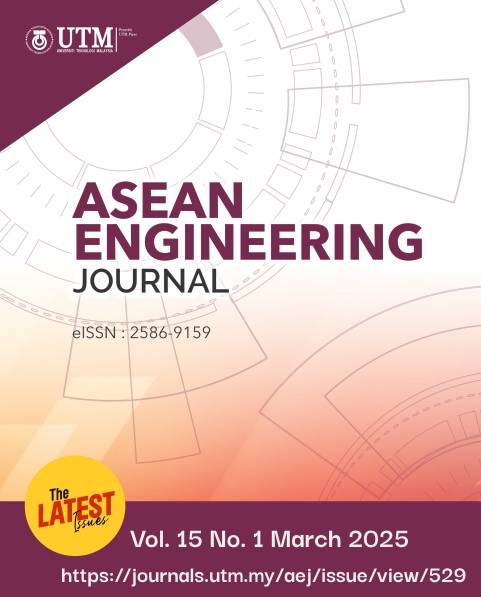SUSPICIOUS TRANSACTION IDENTIFICATION AND RECOVERY IN CASSANDRA DATABASE
DOI:
https://doi.org/10.11113/aej.v15.22265Keywords:
Cassandra, NoSQL, Data Recovery, Database Forensics, Suspicious TransactionAbstract
Forensic analysis of databases is a challenging and important research field in digital forensics. Most of the applications use databases to store the data. Cassandra is a NoSQL database that offers data replication for high availability, fault-tolerance and ensures no single point of failure. Given its growing popularity, financial institutions have begun to consider Cassandra as a potentially useful database for their organization. Considering the abundant amount of fraud and its implications that can occur at financial institutions, it is needed to ensure that no suspicious transaction on the Cassandra database goes unnoticed by the organization. In addition, being able to recover lost data due to malicious activities is equally necessary. This article presents a tool which helps in identifying suspicious transactions in a financial institution and an option to recover that data.
References
N. F. Mohammed, S. A. Ali, and M. J. Jawad, 2020. “Biometric-based medical watermarking system for verifying privacy and source authentication,” Kuwait Journal of Science, 47(3)
R. Chopade and V. K. Pachghare, 2019. “Ten years of critical review on database forensics research,” Digital Investigation, 29.
“DB-Engines Ranking - popularity ranking of database management systems (n.d.)”, Retrieved March 15, 2023, from https://db-engines.com/en/ranking
Yoon, J. and Lee, S., 2018 “A method and tool to recover data deleted from a MongoDB”, Digital Investigation, 24: 106-120.
Chopade, R. and Pachghare, 2021.V., “A data recovery technique for Redis using internal dictionary structure”, Forensic Science International: Digital Investigation, 38: 301218.
Documentation. (n.d.). Retrieved January 26, 2023, from https://cassandra.apache.org/doc/latest/
“How is data written? | Apache Cassandra 3.x. (n.d.)”, Retrieved January 26, 2023, from https://docs.datastax.com/en/cassandra-oss/3.x/cassandra/dml/dmlHowDataWritten.html
E. C. Cankaya and B. Kupka, 2016. “A survey of digital forensics tools for database extraction,” in Future Technologies Conference (FTC), 1014–1019.
R. Chopade and V. Pachghare, “Evaluation of Digital Forensic Tools in MongoDB Database Forensics,” in Progress in Advanced Computing and Intelligent Engineering, 427–439. Springer,
A. Prasad and B. N. Gohil, 2014. “A Comparative Study of NoSQL Databases.,” International Journal of Advanced Research in Computer Science, 5(5)
N. Mangle and P. B. Sambhare, 2013. “A Review on Big Data Management and NoSQL Databases in Digital Forensics,” International Journal of Science and Research, 4.
W. K. Hauger et al. 2018. “Forensic attribution challenges during forensic examinations of databases,” University of Pretoria,
H. Shahriar and H. M. Haddad, 2017. “Security vulnerabilities of nosql and sql databases for mooc applications,” International Journal of Digital Society, 8(1): 1244–1250,
W. K. Hauger and M. S. Olivier, 2018. “NoSQL databases: forensic attribution implications,” SAIEE Africa Research Journal, 109(2): 119–132,
R. Chopade and V. Pachghare, 2020 “Performance Analysis of Proposed Database Tamper Detection Technique for MongoDB,” in International Congress on Information and Communication Technology.393–400.
A. Golhar, S. Janvir, R. Chopade, and V. K. Pachghare, “Tamper Detection in Cassandra and Redis Database—A Comparative Study,” pp. 99–107, 2020, DOI: 10.1007/978-981-15-0790-8_11.
Kumbhare, R., Nimbalkar, S., Chopade, R., Pachghare, V.K. 2020. Tamper Detection in MongoDB and CouchDB Database. In: Bhalla, S., Kwan, P., Bedekar, M., Phalnikar, R., Sirsikar, S. (eds) Proceeding of International Conference on Computational Science and Applications. Algorithms for Intelligent Systems. Springer, Singapore. DOI: https://doi.org/10.1007/978-981-15-0790-8_12
R. Rowlingson et al., 2004. “A ten step process for forensic readiness,” International Journal of Digital Evidence, 2(3): 1–28,
I. Homem, 2018. “Advancing Automation in Digital Forensic Investigations,” Department of Computer and Systems Sciences, Stockholm University,
A. Abadi, A. Haib, R. Melamed, A. Nassar, A. Shribman, and H. Yasin, 2016. “Holistic disaster recovery approach for big data NoSQL workloads,” in 2016 IEEE International Conference on Big Data (Big Data). 2075–2080.
A. Kathpal and P. Sehgal, 2017. “${$BARNS$}$: Towards Building Backup and Recovery for NoSQL Databases,” Workshop on Hot Topics in Storage and File Systems.
Unable to delete or insert/update data (or “missing data”) – DataStax Support. (n.d.). Retrieved June 28, 2023, from https://support.datastax.com/hc/en-us/articles/360006487657-Unable-to-delete-or-insert-update-data-or-missing-data.
V. Pachghare and R. Chopade, 2021. “A technique to analyze a cassandra tombstone for identification of operations”, In Advances in Intelligent Systems and Computing, 1184.
Key Concepts: Cassandra SSTable Storage Format. (n.d.). Retrieved December 12, 2023, from http://distributeddatastore.blogspot.com/2013/08/cassandra-sstable-storage-format.html
















